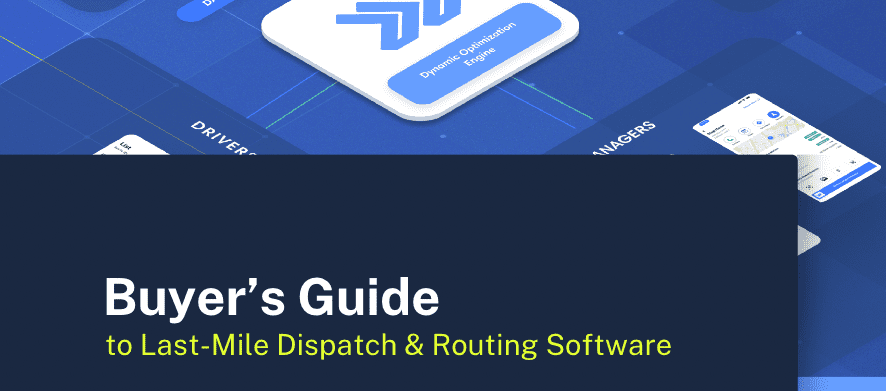Worksheet: Planning Your Last-Mile Delivery Project

Routing and Dispatching Transformation Project Goals
The first step in planning your last-mile project is identifying your specific goals and preparing to invest in the project. After all, routing and dispatching are integral parts of your order-to-cash processes and finding the solutions that make the most sense for your business will only improve your business velocity and efficiency. Depending on your existing technology stack – your order management processes and systems all the way through to WMS and payroll systems, you may want to consider either a complete, end-to-end platform that addresses the entire cycle – planning, execution, coordination and communication – or you may opt to take a modular approach, selecting the modular solutions that complement your other systems.
There are numerous potential goals for your Are you looking to:
- Increase operational efficiency – This common routing and dispatching goal drives overall savings, which can come from increasing vehicle utilization, minimizing driver overtime hours and/or ensuring the most efficient routes. There are a variety of strategies for achieving this goal, so getting crisp and granular objectives will drive your project focus and ensure success.
- Improve fleet and driver performance – Your drivers are on the frontlines of your organization, so optimizing every aspect of their days is critical. The focus is often on routes and route sequences, which are critical, but windshield time is only a portion of their days. What do their stops look like? How do you give them the tools they need to execute stops more quickly?
- Collect more of the right data – Having the data that matters to your organization is one of the key ingredients in long-term dispatching and routing transformation for your last-mile delivery fleet. It’s no longer sufficient to simply measure fleet mileage and driver hours. You need to know how long each stop takes and understand the variables that are driving that on-site time. With that data, you have the opportunity to leverage modern AI and machine learning tools to further improve performance, rather than simply achieving a one-time gain from implementing a new tool.
- Increase rate of on-time deliveries – On-time deliveries mean happier customers and fewer refusals. For many, this goal is a catalyst for a project that yields other dividends, as well.
- Automate processes – As you look to scale your business to support growth – either organic or by acquisition – you want to operate as smoothly as possible, support increasing order volume, and successfully manage the variables in your delivery operations. Automation and the right solutions allow your team to seamlessly handle more business and focus on the value-added tasks that drive customer satisfaction.
- Spend less time readjusting routes – With automation that understands your business and successfully builds efficient route plans for your drivers, you have the opportunity to spend less time adjusting routes.
- Other – You may have still other goals, e.g., visibility, that are critical to your team. Take the opportunity to identify and clarify those with your team.
Download this worksheet as a first step in planning your last-mile transformation.





